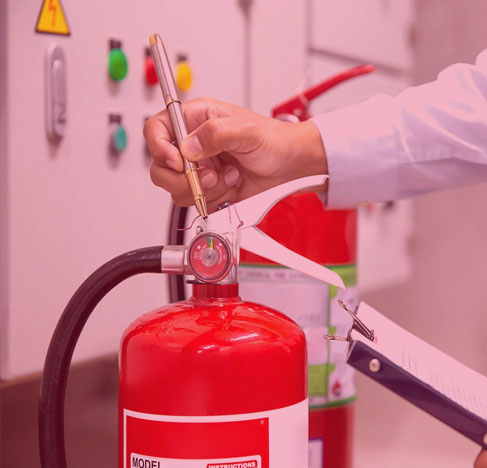Fire Extinguishers
We provide its facilities not only to manufacturers of fire safety equipment’s but also to user agencies, consultants and organizations engaged in research & development work. It also, provides its services for third party testing and certification. We seek samples of Fire Extinguishers & Fire Extinguishing Media from manufactures and users to ensure quality control and obtain certification. It solicits support, collaboration & co-operations from all agencies / individuals concerned with fire safety.
It's important to make sure you have the right types of fire extinguishers on hand to put out common household fires. Read our fire extinguisher safety tips to learn how to stay safe and don't forget to make sure you have the right coverage if your home sustains fire damage.
Getting started with fire extinguishers
The first thing to do when choosing a fire extinguisher is to decide which rooms in your house need one.You should keep at least one on each level of your house.Make sure you keep fire extinguishers handy where fires are more likely to start, like in the kitchen and garage.

Bio Medical Waste Testing Laboratory
Understanding fire extinguisher classes
There are four classes of fire extinguishers – A,B,C & D – and each class can put out a different type of fire.
- Class A extinguishers will put out fires in ordinary combustibles such as wood & paper
- Class B extinguishers are for use on flammable liquids like grease, gasoline & oil.
- Class C extinguishers are suitable for use only on electrically energized fires.
- Class D extinguishers are designed for use on flammable metals.
Multipurpose extinguishers can be used on different types of fires and will be labeled with more than one class, like A-B,B-C or A-B-C.
The Laboratory Management is seriously considering setting up a furnace & jigging room with relevant infrastructure to conduct Fire Tests on Passive /Active Fire Protection Appliances/Systems as per relevant national & international standards.
Testing Parameters :-
Fill Density,Filling Tolerance & Capacities,Test Pressure,Minimum Burst Pressure,Minimum Effective Discharge Time And Bulk Range Of Discharge,Resistance To Temperature Changes,Resistance To Impact,Resistance To Vibration,Resistance To Corrosion (External & Internal),Tapping Test.
Performance Requirements For Test Fires :-
Class A,Class B,Pressure Cycling Test,Thickness Of Welded Low Carbon Steel Cylinder,Carrying Handle